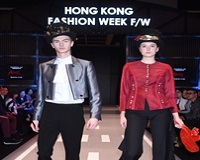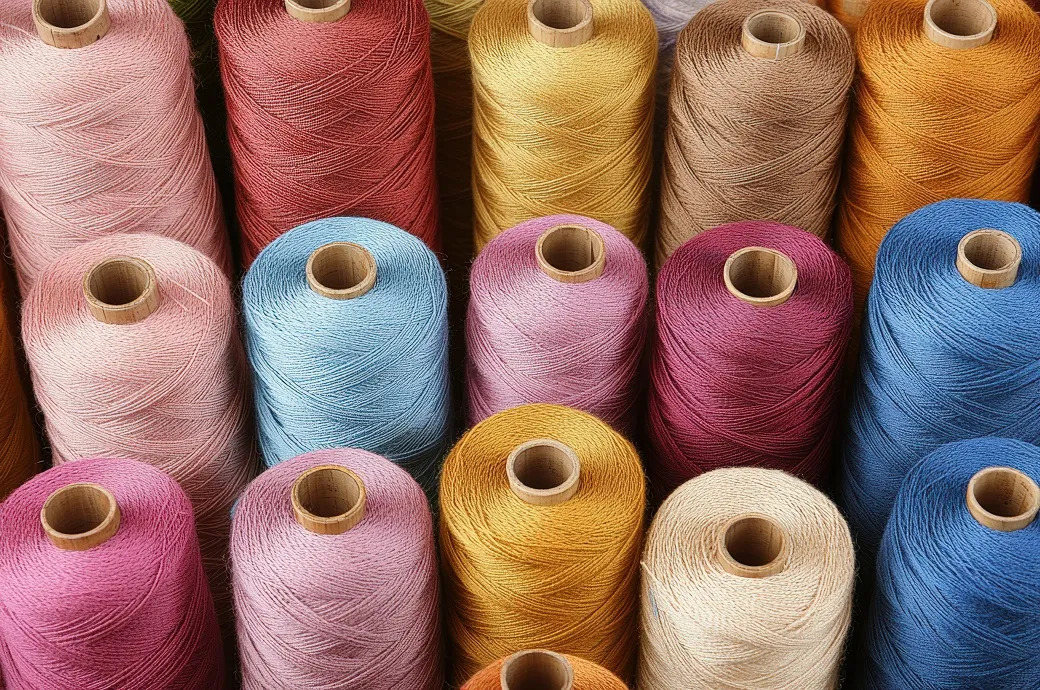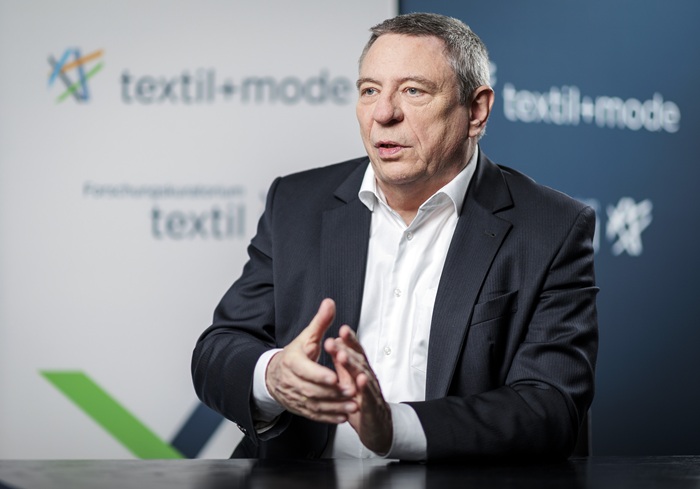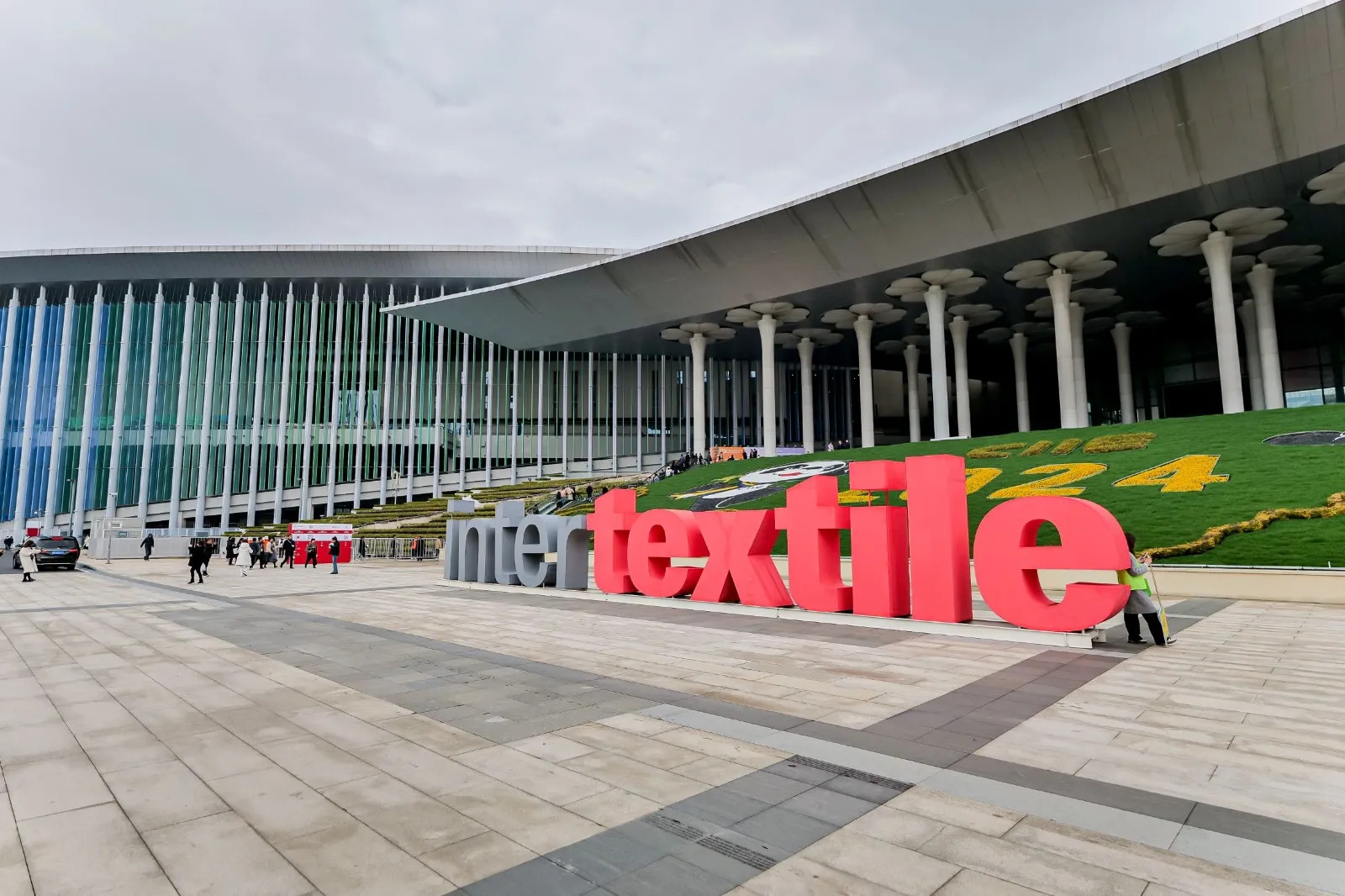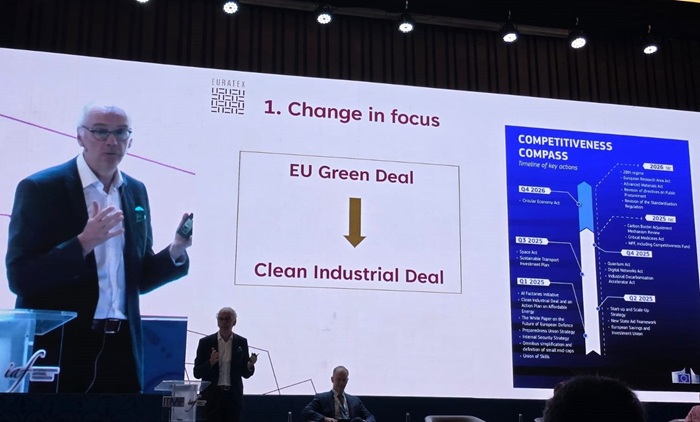FW
International fashion brands are set to open more stores in Kenya this year. Among these are Turkish clothing line LC Waikiki, The Foschini Group of South Africa, the UK’s F&F and jewelry firms that include Austria’s Swarovski and India’s Anmol.
They see Kenya as a good investment destination because of the retail environment and the growing middle class. And infrastructure in Kenya is relatively well developed compared to other East and West African countries.
Kenyans have an international outlook regarding fashion and entertainment, always in tune with what is happening in New York, London and Milan. LC Waikiki will open the first store in sub-Saharan Africa in the first quarter of the year. The clothing line has over 600 stores spread across 33 countries.
TFG has 22 different retail brands under its label. The new stores will see the group introduce the Foschini women’s wear shop, the Markham brand targeting men and a second Sterns Jewelry store. Sterns is a contemporary and classic jewelry shop.
Swarovski is a brand known for its crystal glass products and accessories that are widely used by celebrities and fashion designers. F&F is a fashion subsidiary of UK’s largest grocery and general merchandise store Tesco.
Since 2014 China has emerged as India’s biggest trade partner and a country with which India has a large trade deficit. Exports to India account for only two per cent of China's total exports. India’s imports from China rose by more than seven per cent in October 2016, while exports to China fell by 11 per cent, widening the trade deficit to a record 48 billion dollars.
China-India trade cooperation has deepened over the years and the bilateral trade has grown 24 times in 15 years, from 2.9 billion dollars in 2000 to 71.6 billion dollars in 2015. In 2015, China imported two billion dollars worth of cotton and more than 100 million dollars worth of black tea from India, bring benefits to 1.2 million cotton growers and 50,000 tea farmers and sellers in India.
Since China started its reforms and opening-up policy in 1978, its economy has expanded rapidly and, after three decades of spectacular economic growth, China has gained a strong foothold in global trade. Now it is the biggest trading partner for more than 130 countries.
With its fantastic economic growth, China has, in fact, forced the rewriting of the history of global trade. The Made in China label is establishing China's place as a major player in a global economy. India, Pakistan, Bangladesh, US, Europe, parts of Canada, Australia, Africa and several other countries import from China.
"Organised by the Hong Kong Trade Development Council (HKTDC), the 49th edition of Hong Kong Fashion Week for Fall/Winter wrapped up at the Hong Kong Convention and Exhibition Centre (HKCEC). The four-day fair organized from January 15 to 18, attracted around 14,000 buyers from 76 countries and regions. Featuring 1,400 exhibitors from 13 countries and regions, the fair showcased the latest collections of international brands, garments, fashion accessories, fabrics and clothing accessories."
Organised by the Hong Kong Trade Development Council (HKTDC), the 49th edition of Hong Kong Fashion Week for Fall/Winter wrapped up at the Hong Kong Convention and Exhibition Centre (HKCEC). The four-day fair organized from January 15 to 18, attracted around 14,000 buyers from 76 countries and regions. Featuring 1,400 exhibitors from 13 countries and regions, the fair showcased the latest collections of international brands, garments, fashion accessories, fabrics and clothing accessories. More than 20 fashion activities were staged during the four-day fair, including trend-forecasting seminars, buyer forums and a networking reception, as well as 13 fashion parades and presentations, providing the industry with abundant networking opportunities.
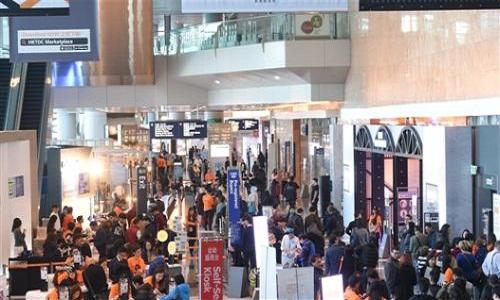
Benjamin Chau, Deputy Executive Director, HKTDC, said the fashion industry is expected to pick up soon as the global economy steadies and the retail market strengthens. “Hong Kong companies are highly adaptable. We saw Hong Kong companies launching a top international star’s namesake accessory collection at the Fashion Week, which received many enquiries. At this year’s Fashion Week, buyer numbers from Indonesia, Thailand and Malaysia saw encouraging growth, and a Thai buyer placed orders on the spot. Hong Kong companies should tap these opportunities amid optimism in emerging markets.”
Among the companies participating this year was Hong Kong exhibitor Innee-Sedona International, which was appointed the sole Asia-Pacific distributor of the Céline Dion accessory brand. Jennifer Chan, MD, Innee-Sedona, said, “Everyone knows that Céline Dion is a famous singer, but not many people in this region know about the existence of the Céline Dion brand. We are making a global launch for the Céline Dion 2018. E-commerce companies from the Chinese mainland, Indonesia, Malaysia and Singapore are interested in buying our products, while buyers from Korea and the Philippines want to be exclusive distributors for their countries.” She also said that an Australian buyer placed a trial order worth $3,000 at the fair, while some buyers sought their help to contact Céline Dion, hoping to develop new clothing lines and other accessories for the brand. She noted that the fair provided an important platform for promoting the brand to international buyers and opening new business opportunities, and they plan to return to the fair next year.
Buyers show optimism
Thai exhibitor Jaspal, a locally renowned brand that operates some 300 retail stores with 15 own fashion brands in Thailand, also found business opportunities in Hong Kong. Viriya Athikiat, the company’s International Sourcing & Merchandising Manager, is responsible for sourcing for the Jaspal brand which runs a chain of 50 stores selling women’s ‘high fashion ready-to-wear’. “I am visiting Hong Kong Fashion Week to find OEM manufacturers for ladies’ wear. I have placed an order worth $75,000 - $80,000 with a Chinese mainland exhibitor from Huzhou for knit sweaters. Talks are underway with another mainland supplier for accessories such as scarves and trims with a potential order worth $40,000 - $45,000.”
Small Orders zone
With demand for sourcing in small quantities, the show once again set up an hktdc.com Small Orders zone, featuring nearly 100 showcases and garment racks with about 450 products available for orders in minimum quantities of between five and 1,000 pieces. During the four-day event, more than 4,100 buyers visited the zone and some 6,400 business connections were established. And with the newly launched hktdc.com Small Orders (Chinese Mainland), mainland buyers who placed small orders could now settle payments in renminbi using AliPay, TenPay, WeChat Pay or China UnionPay conveniently.
To offer year-round sourcing opportunities for fashion buyers, Hong Kong Fashion Week for Spring/Summer will be held on July 9-12, while Centrestage will be staged on September 5-8. Centrestage provides an ideal promotion platform for Asian and international fashion brands and designers, further solidifying Hong Kong’s position as Asia’s fashion capital.
By increasing multi-brand outlets and franchise stores, Bombay Dyeing is in plans to invest around Rs.100 crores for the revival of its brand. It is also planning new products for a turnaround in 2017-18. The company is reinventing itself for which major investments have been lined up. Soon after the company decided to exit textile manufacturing, the reinvention started more than a decade ago.
The manufacturing will be outsourced and from now till 2020, the Wadia group-owned company plans to invest more than Rs 100 crore in the brand and double its multi-brand outlets to 10,000 more than double its franchise stores to 500 and introduce 3-4 new products every year. These measures would help the segment more than treble its revenues to Rs 1,000 crore by fiscal 2020 from Rs 305 crore last year.
Stating that eastern India had a huge potential in the sector, it is said that market share in this region could be enhanced from 12 per cent at present to over 20 per cent. Bombay Dyeing is also setting up its in-house design studio and system for high-tech digital print to boost production in premium segment. It is also said that the company was finalizing tie-ups with e-commerce companies like Amazon, Flipkart and Snapdeal to reach the product at the customer's doorstep.
In order to boost jobs and exports ,the Sri Kankan government yesterday handed over the former Kabool Lace Giriulla facility to proven apparel giant MAS Holdings. The facility was shut for 12 years.
MAS Holdings chairman Mahesh Amalean said that they expected to invest over $ 28 million in export-oriented projects in the facility and create over 3,000 direct jobs within the first three years of operations and export revenue of around $ 65-$ 70 million. He said that the company had already commenced refurbishment and reinstalling machinery to commence operations by next year.
As Nike plans to increase its revenue from $ 30 billion to $ 50 billion by 2020, MAS Holdings is capitalising on its opportunity to double its capacity being the second-largest supplier to leading sportswear company Nike. Amalean pledged that MAS Holdings would continue to be confident over Sri Lanka’s international competitiveness especially in manufacturing. The Giriulla facility will become the second privately-owned industrial park in the country following the MAS Fabric Park in Thulhiriya which houses over 8,200 employees and generates more than $ 150 million.
Come Sankranti, everyone in Andhra Pradesh and Telangana purchases Ponduru Khadi to celebrate the festival of harvest. But this year, the popular Khadi product received a body blow from an unexpected quarter. Demonetisation adversely affected the purchase of cotton and sale of finished products of khadi leaving the khadi handloom workers in the lurch.
Generally, Sankranti is the season for Ponduru Khadi, the sales of which that touches a high during the season. However, due to the non-availability of currency notes, there are no purchases and sales so far. Though the cash is in their accounts, there is no way to pay the workers by way of hard currency.
There are at least 800 khadi weavers working for the Andhra Fine Khadi Karmikabhivrudhi Sangham (AFKKS) in Ponduru, G Singadam and Santakaviti mandals in the district. These workers needed to be paid Rs 3 lakh by the society every week for purchasing the cotton yarn from them. The weavers needed to be paid wages once a month. The Society could not purchase full stock of cotton yarn during the last one month, but could procure only half of the cotton yarn from the workers but could not pay the price to them.
Following high demand for yarn, a number of workers started making yarn almost doubling the production. But due to the demonetization, they could not be paid the wages though they are supplying yarn. The society used to sell khadi worth Rs 1 lakh every day during the festive season of Sankranti.
To heighten engagement of many developing and least developed countries in global trade, the United Nations Conference on Trade and Development (UNCTAD) has suggested improved access to G20 markets as a way to further boost exports. According to UNCTAD, the world’s poorest countries are barely engaging in the global economy but are fully liberalising their trade for these countries into G20 markets could boost their exports by about 15 per cent.
While least developed countries (LDCs) account for about 12 per cent of the world’s population, their share in global exports stands at about one per cent, the report Key Indicators and Trends in Trade Policy 2016, shows. The report shows that boosting exports from these countries could help accelerate economic growth, generate jobs and provide financial resources for sustainable and inclusive development.
Recognising the importance of trade for LDCs, the sustainable development goals (SDGs) include Target 17.11 to increase significantly the exports of developing countries, in particular with a view to doubling the least developing countries’ share of global exports by 2020. The report also finds that LDCs generally trade much less than the size of their economies would suggest. The export-to-GDP ratios of the 48 LDCs are on average about 25 per cent substantially less than the average for other developing countries of about 35 per cent.
This indicator has been on a clear downward trend since 2011 and it shows the LDC struggle to integrate into the global economy. It may be noted that G20 countries support LDCs through a range of mechanisms to facilitate trade such as duty-free and quota-free access. But removing all tariffs could boost LDC exports to G20 countries by about $10 billion per year.
At a meeting held in Ankara, the Turkish Exporters Assembly (TİM) revealed the export figures for December and the 2016 financial year along with its goals for the New Year. Following TİM chairman Mehmet Buyukeksi's presentation in which he shared export data with participants, economy minister Nihat Zeybekci went on to evaluate Turkey's 2016 export performance in addition to the country's goals for 2017.
According to data announced in the meeting, while the share of exports in world trade stood at 0.87 per cent in 2015, it broke a record by hitting 0.89 per cent in 2016. Indicating that 2017 will be a more balanced year than last year, economy minister Zeybekci said that developments are expected to get better in Turkey's region. He noted that a poor growth performance in the global economy negatively affected global exports, adding that total exports, which declined by 13.5 per cent in value in 2015 decreased by 4 per cent in dollar terms in the first 10 months of 2016, according to data compiled by the World Trade Organization (WTO). Yet, despite the shrinking global trade, Turkey's share in world trade reached 0.89 per cent last year up from 0.87 per cent in 2015.
According to the country-based exports data released by the TİM, Turkey made the largest amount of exports to Germany in December with approximately $1.12 billion, seeing an increase of 3.7 per cent compared to December 2015. While Britain ranked the second with $737 million, exports to Iraq amounted to over $732 million with a 59 per cent increase in December, followed by Italy with 12 per cent and the U.S. with 8.7 percent. Exports to the United Arab Emirates (UAE) and Bulgaria rose by 77 per cent and 44 per cent, respectively, in the same period.
Cotton arrival from the current crop has increased 11.72 per cent but remains below the revised output target for 2016, a industry data shows. In its fortnightly cotton arrival report, the Pakistan Cotton Ginners Association (PCGA) has said that a total of 10.36 million bales arrived in the country by December 31, last year against 9.27 million bales during the same period in the preceding year.
Analyst and president of Karachi Cotton Brokers Association Naseem Usman has revealed that the government had fixed the target at 14.1 million cotton bales which was later revised to 10.8 million bales. He further said that his Association doesn’t see cotton arrival going beyond 10.5 million bales of 170 kilogram each.
Fortnightly cotton arrival flow from December 15 to 31 remained at 218,762 bales but lower than last year’s arrival of 244,987 bales during the same period. Arrivals from Punjab increased by 18.71 per cent to 6.61 million bales as compared to 5.57 million bales during the same period in 2015. Flows from Sindh increased only 1.21 per cent to 3.74 million bales against 3.70 million bales.
The All Pakistan Textile Mills Association (Aptma), citing the reason of shortage against consumption demand, has urged the government to withdraw four per cent custom duty on cotton import in the country. Pakistan’s total cotton demand is around 16 million bales. According to APTMA sources, the millers had imported 1.2 million tons of lint from African countries, Brazil and US earlier this season and purchased 1.0 million more bales from the local crop. Still they required 3.5 million bales to meet the consumption demand, which would now be fulfilled with import from India.
Nearly two months after Prime Minister Narendra Modi announced the demonetization of the Rs 500 and Rs 1,000 notes, Ludhiana has started to get back on the track of normality with people coming back to view films, shopping malls and restaurants. On the other hand, factory outlets and garment shops are abuzz with customers coming in to make purchases. This has, in turn, brought smiles back on the faces of traders, many of who have fallen back on cashless solutions to facilitate shoppers.
The manager of a factory outlet on Malhar Road, Sanjiv Sood, admitted that they have had a good footfall since December 25. Earlier, the situation could be likened to black days when traders were not able to sell even a single piece of jacket. Thankfully, the sales are decent now.
Traders said when the government had scrapped the high-value notes in November, the absence of a card machine and an e-wallet were the biggest drawback for them. Many city residents are of the view that they are out shopping at this time because of the huge discounts and offers running at garment outlets.

